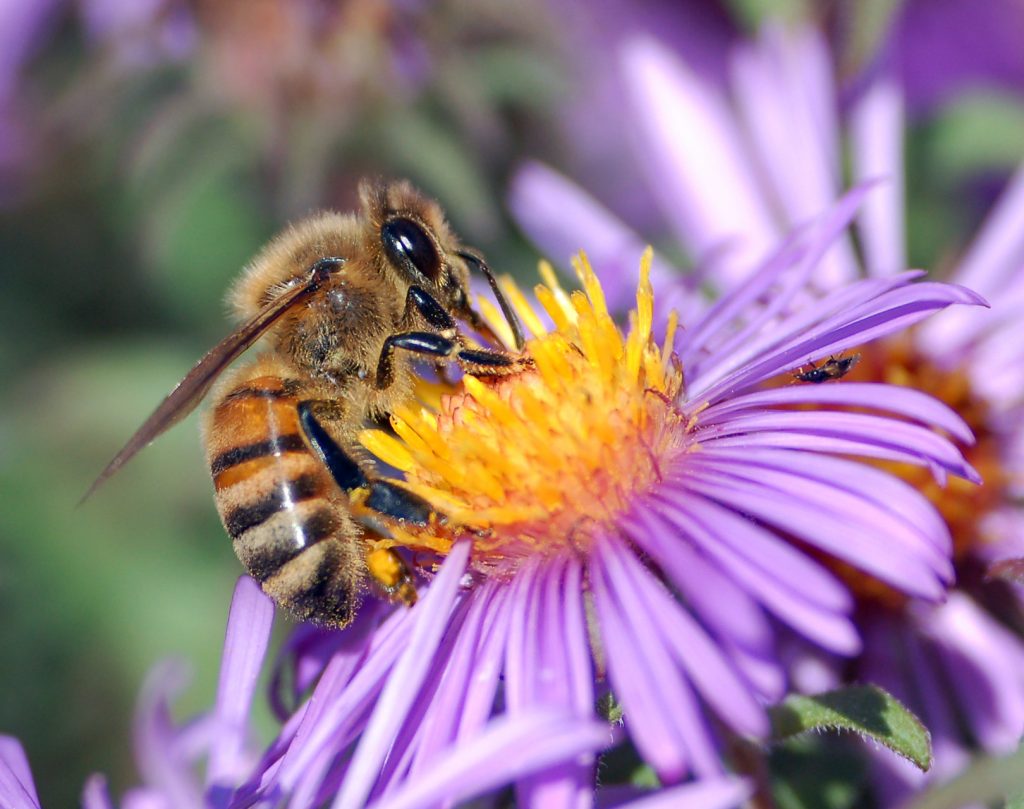During the summer of 2015 the Botanics had a major focus on bees with the Urban bees exhibition in the John Hope Gateway and various pollinator-friendly initiatives in the Garden. As part of this honey bee hives were brought to the small fenced-off meadow behind the East Gate Lodge. This has been the latest development that highlights the importance of pollinators in the Garden. Watching pollinator activity is fascinating and brings a new dimension to the garden. It is a reminder that plants need pollinators and that we do too as so many of our crops are insect pollinated.
For many years now the Garden has managed a series of hives in the Nursery, but unfortunately this area has no public access. The idea behind the new hives was to provide a degree of public access, whilst at the same time ensuring the safety of visitors and neighbours.
Working with Brian Pool, a local commercial beekeeper, hives were brought to the Garden in spring and will depart in the next few days. So the big question is how have the Botanics bees fared? The summer has not been kind to bees in Scotland this year. In the early part of the summer weather was very patchy and colonies across Scotland have struggled as a result. The Scottish Beekeepers Association issued starvation warnings to beekeepers as conditions have prevented bees from building up their honey reserves. Luckily the Botanics hives built up enough reserves to see them through until the weather picked up in late July.
Brian has been really pleased with how well the Botanics hives have done in comparison with many others. He has harvested eight boxes of honey from four hives, which in a difficult year is a good result. This experience demonstrates the high quality foraging opportunities the Garden offers bees. According to Brian this is more evidence “that bees in the city do rather better than there cousins in more rural areas” and with over sixty hives outside the city he is well aware of how hard it has been for bees this year.

